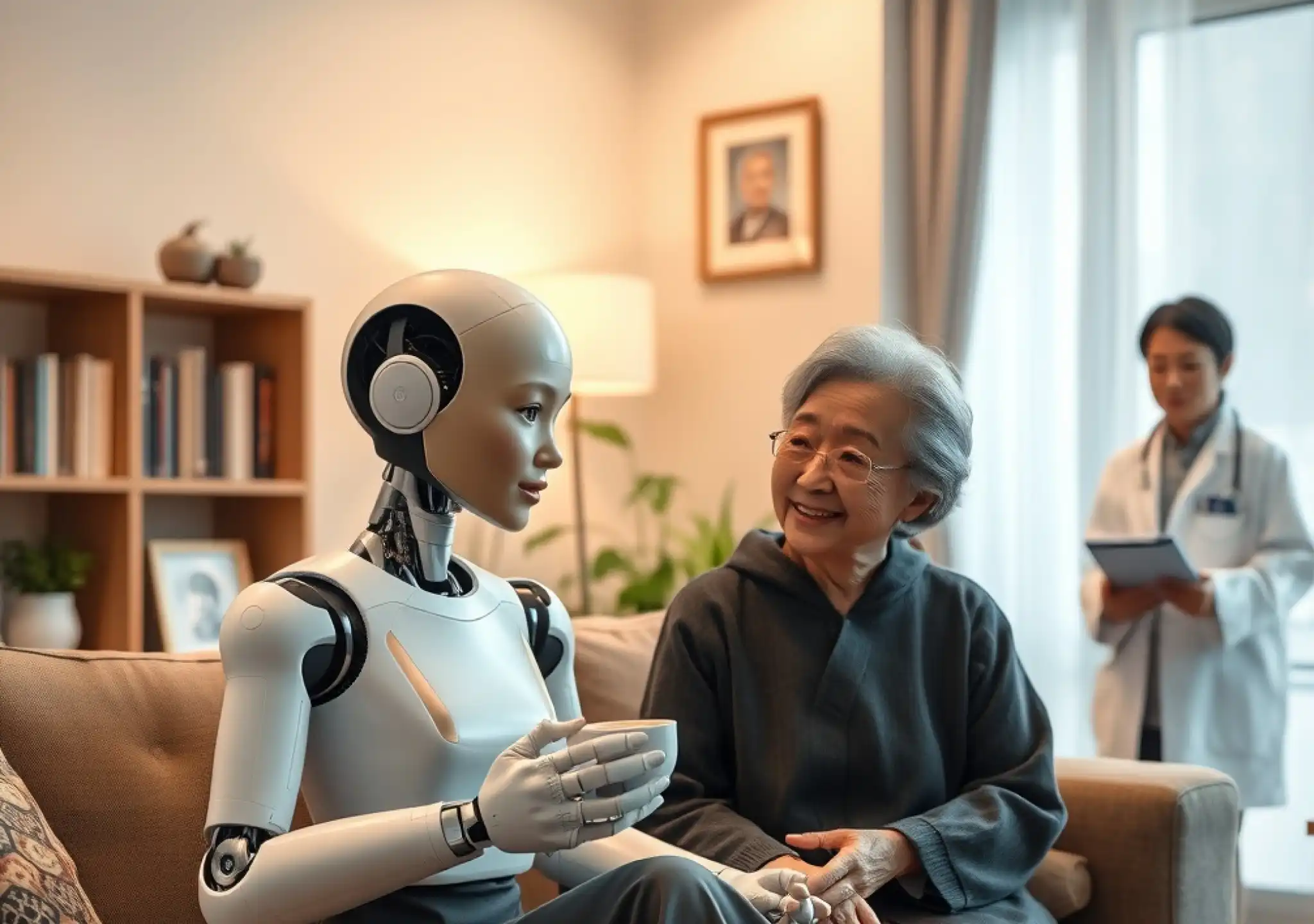Exploring a future where people and humanoid machines live side by side, researchers in Japan are leading the way in developing social robots designed to engage with humans.
One of the most notable examples is Erica, a lifelike android with expressive features and a synthesized voice. Developed in Japan in 2014, Erica was built for natural conversation. Since her initial debut, four iterations have been created. While she still cannot walk, a 2017 upgrade gave her the ability to move her head, arms, neck, and shoulders.
Developers aim for these robots to integrate smoothly into everyday human interactions. “We want social robots to feel like they belong in our daily lives. When they look human, we naturally expect them to behave like us. If they don’t, it feels off—like we’re just talking to a machine,” says Dylan Glas, a researcher at Osaka University who helped build Erica.
Building a Social Connection
Glas, who worked on Erica for three years, describes her as a new kind of interactive entity—not alive, yet capable of building subconscious social connections. “We don’t form emotional ties with a vacuum cleaner. But with human-like robots, there’s something different. You talk to them, and on some level, you feel a bond,” he explains.
He played a key role in programming Erica’s conversational systems, essentially designing her personality and behavior. “There are other androids, but Erica was built to be fully autonomous, able to converse freely with anyone. That puts her at the forefront of robotic development,” Glas adds.
A Surge in Robotic Automation
Globally, the use of robots in various industries continues to rise. The International Federation of Robotics projected that 1.7 million industrial robots would be deployed worldwide by 2020, with China, South Korea, Japan, and the US leading the field.
In Japan, technological advancements are pushing robots beyond the factory floor, enabling them to mimic and replicate human actions and emotional responses. Erica is just one step in narrowing the divide between humans and machines.
Addressing Social Challenges Through Robotics
While some countries express concern that automation might displace workers, Japan views humanoid robots as a potential solution to national challenges. With the country’s population shrinking and aging rapidly, experts are considering robotics as a way to address labor shortages and elderly care.
“Japan is becoming a super-aged society, and we need robotic assistance,” says Professor Hiroshi Ishiguro, a pioneer in humanoid robotics and the creator of Erica. “Older adults are more open to interacting with robots. They often feel judged by others, but not by machines.”
A Culture More Open to Machines
Ishiguro believes Japanese culture is naturally more receptive to the presence of robots compared to other regions. He points to the country’s cultural cohesion, high level of trust, and enthusiasm for embracing new technologies as key reasons.
“We didn’t expect smartphones to become such an integral part of our lives—but they did. The same will happen with robots. Even if some people doubt their future, I am confident we will accept them,” he says.
The Path Forward for Social Robots
To understand how robots and humans might coexist, researchers are closely observing how people interact with humanoids like Erica. In Kyoto, scientists are refining these machines, preparing them for deeper roles in society—from companionship to caregiving.
As advancements continue, the line between artificial intelligence and social presence grows blurrier, offering a glimpse into a future where robots may not only assist humans but also connect with them on a profoundly personal level.

